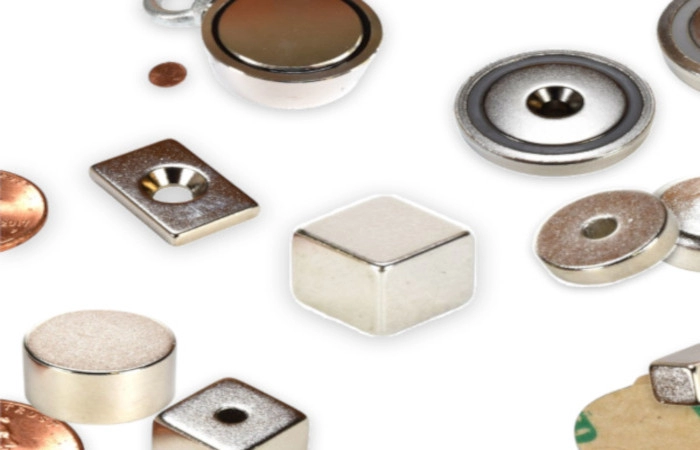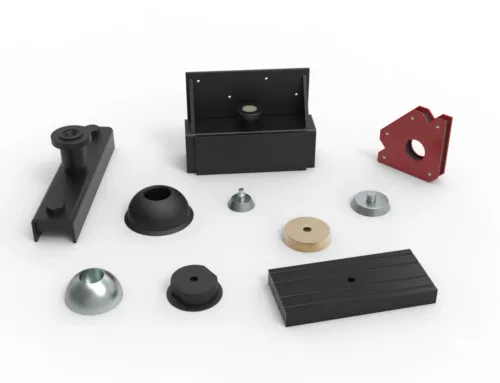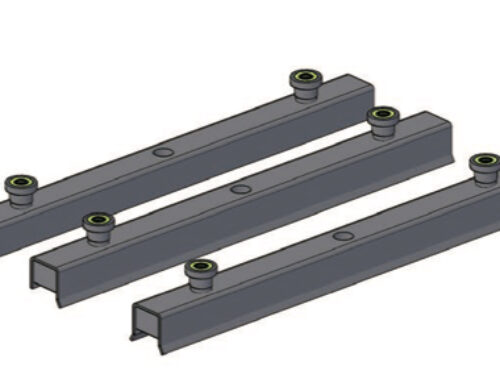When it comes to magnetic power, not all magnets are created equal. Some are strong enough to hold a note on your fridge… others can lift a car. So, what is the strongest magnet in the world—and more importantly, how is magnetic strength actually measured?
In this guide, you’ll discover the science behind magnetic field strength, the rare earth materials that make magnets ultra-powerful, and which types dominate both industrial and scientific applications. Whether you’re an engineer, a tech enthusiast, or simply curious, you’re about to learn exactly what makes a magnet the strongest—and how to choose the right one for your needs.
Let’s get started.
What Defines Magnet Strength
When we talk about the strength of a magnet, we’re really talking about how strong its magnetic field is. Magnetic field strength is usually measured in Tesla (T) or Gauss (G) — with 1 Tesla equal to 10,000 Gauss.
Key Factors That Affect Magnet Strength
Several factors determine how strong a magnet can be:
- Material composition – Rare earth magnets like neodymium have the highest magnetic strength among permanent magnets.
- Shape – Certain shapes, like cylinders or horseshoes, concentrate magnetic fields better.
- Size – Larger magnets often produce stronger overall magnetic forces.
- Temperature – Heat can reduce magnetic strength; some materials are more temperature resistant.
- Manufacturing process – Precision and quality control impact final strength.
| Factor | Influence on Strength |
|---|---|
| Material | Neodymium strongest, ferrite weaker |
| Shape | Focuses or disperses field lines |
| Size | Larger surface = more pull |
| Temperature | Heat may cause loss of magnetism |
| Processing | Determines uniformity and density |
Permanent Magnets vs Electromagnets
- Permanent magnets (like neodymium, ferrite, samarium cobalt) retain their magnetism without electricity.
- Electromagnets create a magnetic field only when electric current flows through them. They can be far stronger than permanent magnets in controlled conditions but lose their field when power is cut.
Permanent magnets are ideal for constant, maintenance-free uses. Electromagnets are favored when adjustable or extreme magnetic fields are needed, such as in labs or heavy lifting equipment.
Types of Magnets Ranked by Strength
When it comes to magnetic strength, not all magnets are equal. Here’s a quick look at the main types you’ll come across and how they stack up.
1. Neodymium Magnets (NdFeB)
- Strongest permanent magnets available for commercial use
- Made from neodymium, iron, and boron
- Can reach up to about 1.4 Tesla (14,000 Gauss)
- Common in motors, electronics, and industrial tools
- Downsides: Can lose strength at high temperatures, need coating to prevent corrosion
2. Samarium Cobalt Magnets (SmCo)
- High strength, but just below neodymium
- More temperature and corrosion resistant
- Often used in aerospace, defense, and high-temp motors
- Price is higher due to rare earth material cost
3. Alnico Magnets
- Made from aluminum, nickel, and cobalt
- Stronger than ferrite but weaker than rare earth magnets
- Excellent temperature stability
- Common in sensors, guitar pickups, and older motors
4. Ferrite or Ceramic Magnets
- Affordable and widely used
- Less magnetic strength than rare earth magnets
- Excellent in outdoor use due to corrosion resistance
- Typically found in speakers, fridge magnets, and small motors
5. Electromagnets
- Not permanent — magnetic field comes from electric current
- Can be the most powerful magnets in controlled lab or industrial settings
- Strength can be adjusted depending on power source
- Used in MRI machines, scrap yards, and maglev transportation
Typical Strength Comparison
| Magnet Type | Approx. Max Strength (Tesla) | Best Feature | Common Uses |
|---|---|---|---|
| Neodymium (NdFeB) | ~1.4 T | Highest permanent strength | Motors, electronics |
| Samarium Cobalt | ~1.0 T | High temp + corrosion resist | Aerospace, defense |
| Alnico | ~0.6 T | Heat stability | Sensors, instruments |
| Ferrite/Ceramic | ~0.4 T | Cost-effective, durable | Speakers, small appliances |
| Electromagnet | 10+ T (lab) | Adjustable strength | MRI, industrial lifting |
In most real-world situations, neodymium magnets dominate for their unmatched permanent magnetic power, making them the go-to choice for high-performance applications in the U.S.
How Are Strong Magnets Made

Strong magnets, especially high-strength rare earth magnets, are made through a mix of precise material selection and specialized manufacturing steps. The most powerful ones on the market, like neodymium magnets, rely heavily on rare earth elements such as neodymium (Nd), iron (Fe), and boron (B), with additions like dysprosium (Dy) to boost temperature resistance.
Materials for High-Strength Magnets
The magnet’s strength starts with its composition. Common types include:
- Neodymium-Iron-Boron (NdFeB) – strongest permanent magnets available commercially
- Samarium Cobalt (SmCo) – high strength, better high-heat and corrosion resistance
- Alnico – good temperature stability but weaker magnetic strength
- Ferrite (ceramic) – low cost, weaker strength but high corrosion resistance
The Manufacturing Process
- Powder Preparation – Raw rare earth elements are melted, cooled, and crushed into a fine powder.
- Pressing – Powder is compacted in molds under a magnetic field to set its orientation.
- Sintering – The pressed shapes are heated in a controlled atmosphere to fuse particles.
- Machining and Coating – Magnets are cut to exact sizes and coated (nickel, epoxy, zinc) for protection.
- Magnetizing – A strong magnetic field is applied so the magnet reaches maximum strength.
Quality Control and Testing
- Pull force tests to verify holding power.
- Gauss meter checks to measure magnetic field strength.
- Thermal tests to ensure performance at required temperatures.
- Durability inspections for coating integrity and resistance to chipping.
Environmental and Safety Considerations
- Magnet production requires proper waste handling due to rare earth mining impacts.
- Dust from grinding neodymium can be flammable; factories follow strict safety rules.
- Many U.S. buyers prefer suppliers who meet RoHS and ISO standards for safety and sustainability.
Applications of the Strongest Magnets
Strong magnets play a role in more industries and technologies than most people realize. The best-performing options — like high-strength rare earth magnets — are used anywhere reliable magnetic force is essential.
Industrial
- Motors and Generators – Neodymium magnets help boost efficiency in electric motors for everything from manufacturing equipment to wind turbines.
- Magnetic Separators – Used in recycling plants, mining, and food processing to pull metal contaminants from products quickly and safely.
Medical
- MRI Machines – Rely on powerful superconducting magnets to produce detailed body images without radiation.
- Surgical Robotics – High-precision tools often use compact, strong permanent magnets for smooth and consistent motion control.
Consumer Electronics
- Headphones and Speakers – Stronger magnets mean clearer sound and better bass response in a smaller size.
- Hard Drives – Data storage systems need stable magnetic fields for writing and reading information.
- Smartphones and Tablets – Magnets support accessory attachment, wireless charging alignment, and haptic feedback.
Emerging Technologies
- Maglev Trains – Use high-powered electromagnets to float and propel without physical contact, reducing friction and increasing speed.
- Energy Storage Systems – Advanced flywheel storage and magnetic bearings depend on high-strength magnets for low-loss operation.
- Aerospace – Spacecraft use rare earth magnets in guidance systems, actuators, and advanced propulsion components.
Choosing the Right Strong Magnet for Your Needs
When picking the right strong magnet, it comes down to matching the magnet’s capabilities to your application. Here are the main factors I always look at:
- Strength – Check the magnetic field strength (measured in Tesla or Gauss) to be sure it meets your pulling or holding requirements. For example, N52 grade neodymium magnets offer some of the highest pull force in commercially available permanent magnets.
- Temperature resistance – If your project involves high heat, pick a magnet that can handle it. Neodymium is strong but can lose power at elevated temps, while Samarium Cobalt offers better thermal stability.
- Corrosion resistance – In humid or outdoor use, a coating like nickel, epoxy, or gold can prevent rust and keep the magnet performing for years.
- Cost – Rare earth magnets like neodymium are pricier but offer unmatched strength in a compact size. Ferrite is cheaper but weaker.
- Shape and size – The magnet geometry matters for performance. Specialty shapes can focus magnetic force where needed (see different magnet shapes here).
At NBAEM, customization is a big advantage. Whether you need magnets for small-scale electronics, high-torque motors, or heavy-duty industrial uses, we can adjust:
- Magnet grade for optimal balance of strength and cost
- Coating type for maximum durability
- Magnet shape and size tailored to your device design
- Assembly-ready options to save production time
For example, we’ve provided corrosion-resistant N48 neodymium magnets for marine equipment, high-heat Samarium Cobalt pieces for aerospace controls, and compact, high-pull magnets for coreless motor designs in robotics.
Choosing right means balancing power, durability, and cost—then fine-tuning the material and design to fit your job perfectly.
Contact us for more details.





Leave A Comment